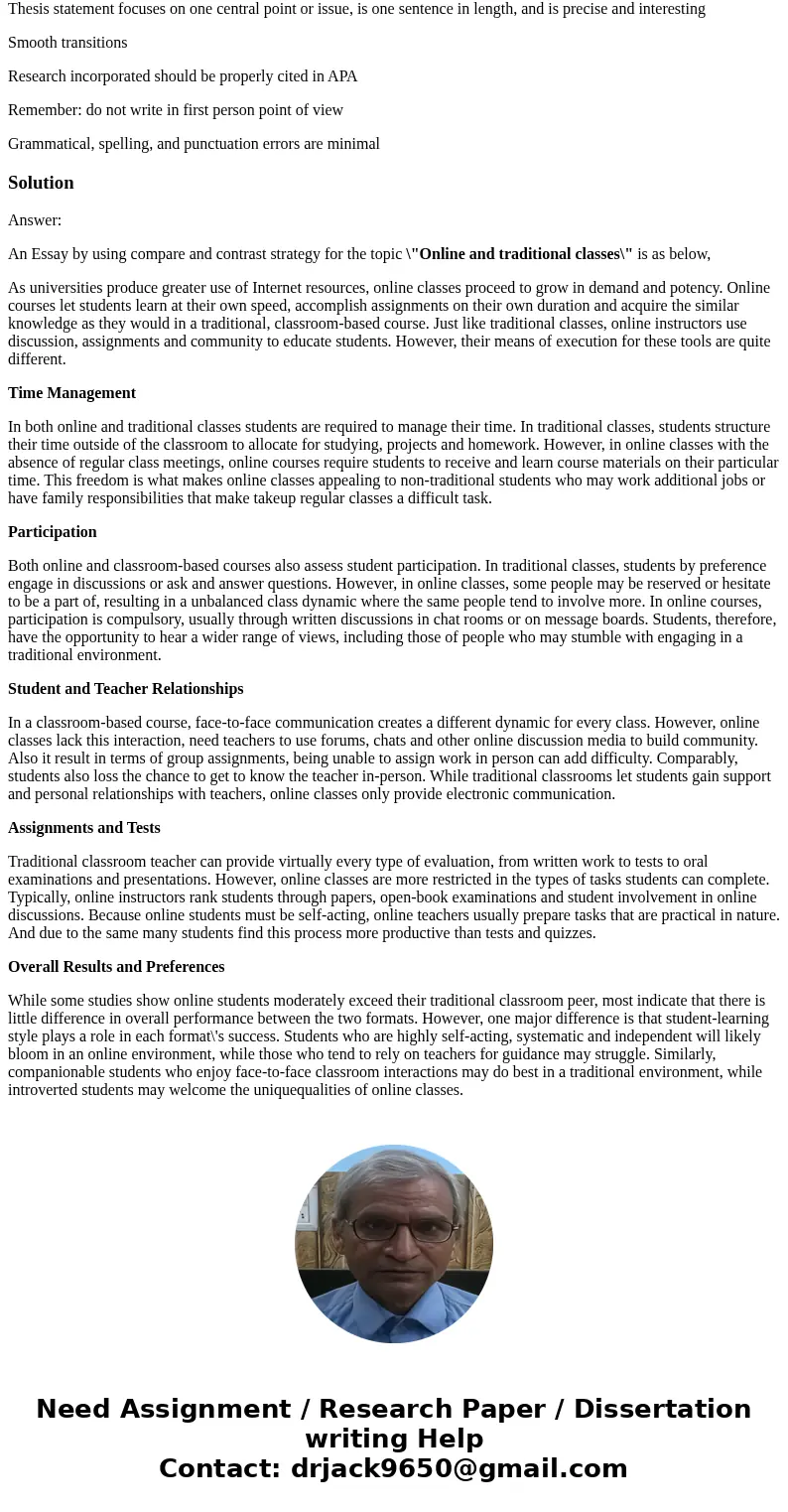Topics The representation of women fathers teenagers or som
Topics
· The representation of women, fathers, teenagers, or some other group in the 1950s or 1960s sitcom and a similar contemporary sitcom
· Male and female styles of conversation
· The playing styles of two NBA or WNBA superstars
· Online and traditional classes
· The effectiveness of two pieces of writing or Web pages
· Two or more products being considered for purchase
· Two or more video games or types of video games
Directions: you will write a paper using the compare and contrast strategy (choose one topic from above ). Write your essay in a Word document. Your essay should include the following elements:
Essay should be 2-3 pages in length (excluding the title page)
Include a title page in proper APA format
Text should be double-spaced
One-inch margins should be at the left, right, top, and bottom of each page
12 point font
Times New Roman font
Indent paragraphs five spaces
Topic is focused
Purpose is clear; a specific audience is addressed
Thesis statement focuses on one central point or issue, is one sentence in length, and is precise and interesting
Smooth transitions
Research incorporated should be properly cited in APA
Remember: do not write in first person point of view
Grammatical, spelling, and punctuation errors are minimal
Solution
Answer:
An Essay by using compare and contrast strategy for the topic \"Online and traditional classes\" is as below,
As universities produce greater use of Internet resources, online classes proceed to grow in demand and potency. Online courses let students learn at their own speed, accomplish assignments on their own duration and acquire the similar knowledge as they would in a traditional, classroom-based course. Just like traditional classes, online instructors use discussion, assignments and community to educate students. However, their means of execution for these tools are quite different.
Time Management
In both online and traditional classes students are required to manage their time. In traditional classes, students structure their time outside of the classroom to allocate for studying, projects and homework. However, in online classes with the absence of regular class meetings, online courses require students to receive and learn course materials on their particular time. This freedom is what makes online classes appealing to non-traditional students who may work additional jobs or have family responsibilities that make takeup regular classes a difficult task.
Participation
Both online and classroom-based courses also assess student participation. In traditional classes, students by preference engage in discussions or ask and answer questions. However, in online classes, some people may be reserved or hesitate to be a part of, resulting in a unbalanced class dynamic where the same people tend to involve more. In online courses, participation is compulsory, usually through written discussions in chat rooms or on message boards. Students, therefore, have the opportunity to hear a wider range of views, including those of people who may stumble with engaging in a traditional environment.
Student and Teacher Relationships
In a classroom-based course, face-to-face communication creates a different dynamic for every class. However, online classes lack this interaction, need teachers to use forums, chats and other online discussion media to build community. Also it result in terms of group assignments, being unable to assign work in person can add difficulty. Comparably, students also loss the chance to get to know the teacher in-person. While traditional classrooms let students gain support and personal relationships with teachers, online classes only provide electronic communication.
Assignments and Tests
Traditional classroom teacher can provide virtually every type of evaluation, from written work to tests to oral examinations and presentations. However, online classes are more restricted in the types of tasks students can complete. Typically, online instructors rank students through papers, open-book examinations and student involvement in online discussions. Because online students must be self-acting, online teachers usually prepare tasks that are practical in nature. And due to the same many students find this process more productive than tests and quizzes.
Overall Results and Preferences
While some studies show online students moderately exceed their traditional classroom peer, most indicate that there is little difference in overall performance between the two formats. However, one major difference is that student-learning style plays a role in each format\'s success. Students who are highly self-acting, systematic and independent will likely bloom in an online environment, while those who tend to rely on teachers for guidance may struggle. Similarly, companionable students who enjoy face-to-face classroom interactions may do best in a traditional environment, while introverted students may welcome the uniquequalities of online classes.


 Homework Sourse
Homework Sourse